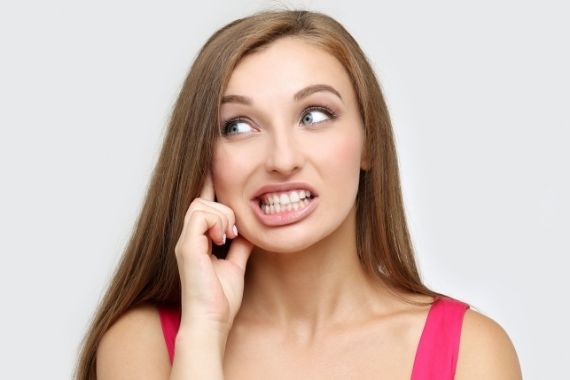TMJ and Bruxism in Ondarreta
He bruxism It is a disorder that consists of unconsciously repeatedly clenching and grinding the teeth. This parafunction or abnormal activity is very common among the population and the causes can be very varied.
The temporomandibular disorders They are a set of common disorders among the population and are the cause of frequent discomforts and pains such as headaches, ear pain, jaw pain, occlusal imbalances, etc. Temporomandibular ailments can originate in the joint structures, or in the muscles of the head and neck such as local myalgia, myalgia with trigger points and myofascial pain.

Types of bruxism
There are two main types of bruxism:
– Sleep bruxism that occurs when we sleep.
– Waking bruxism that manifests itself at any time of the day, while we are awake.
Sometimes, the two types of bruxism can coexist in the same patient simultaneously.
Causes and consequences of Bruxism
Many causes have been described that may be the origin of bruxism, from psychosocial factors (stress, anxiety...) and sleep apnea to gastroesophageal reflux and certain medications.
It is very important to study each case in detail.
Consequences of bruxism
The main consequences of bruxism are:
– Wear of the teeth, due to continued friction between them.
– Muscle exhaustion.
– Joint pathology of the temporomandibular joint (TMJ) such as its inflammation.
– Muscle pathology.
– Frequent headache.
Bruxism Treatment
Discharge splint
The unloading splint is a custom-made plastic – resin – device that is placed on the upper or lower teeth with the aim of protecting them from wear. It is generally used at night therefore it is useful to avoid the consequences of sleep bruxism.
The discharge splint is easy to make and only requires taking some impressions (measurements) of the mouth and teeth. Its use is comfortable and requires periodic adjustments.
Reeducation (Biofeedback)
Bruxism reeducation is the most effective system to correct or eliminate the habit of clenching your teeth, the habit of bruxing. There are different bruxism re-education or biofeedback systems that manage, always with the involvement and commitment of the patient, to eliminate or reduce it and therefore avoid the possible consequences of bruxism.

Can a dental implant cause rejection?
Even the best dental implants can cause patient rejection. Do you want to know how and why this happens? We tell you.
Read More
Everything you need to know about Invisible Orthodontics
Today's technology makes it possible to achieve the smile you have always wanted without having to live with traditional and unattractive appliances.
Read More
Myths about Dental Implants
Nowadays it is possible to place dental implants even if we have very little bone, since there are regeneration techniques.
Read More


